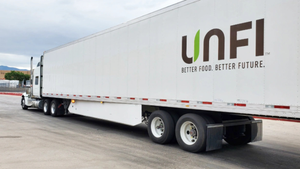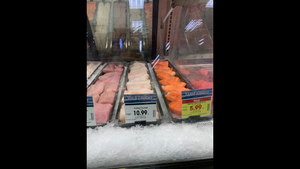Reduce shoplifting, increase profitability
Managing vendor, employee and consumer shrink is one of the industry’s greatest bugbears and one likely to grow in coming years.
August 19, 2014
 When Kroger released its 10-K earlier this year the company cited increased shrink as one of the challenges that it faced in maintaining margins during 2013. The grocery chain, one of America’s largest, is not alone. Managing vendor, employee and consumer shrink is one of the industry’s greatest bugbears and one likely to grow in coming years.
When Kroger released its 10-K earlier this year the company cited increased shrink as one of the challenges that it faced in maintaining margins during 2013. The grocery chain, one of America’s largest, is not alone. Managing vendor, employee and consumer shrink is one of the industry’s greatest bugbears and one likely to grow in coming years.
There are several reasons for this, the most obvious of which relates to continued shareholder pressure to boost bottom lines. That pressure is exacerbated by difficulties that grocers face growing sales in a saturated market, that is inching ahead at about the pace of GDP, but which continues to face incursions from non-sector players.
In fact in an era in which store shrink is almost as large as store profits (a 2005 white paper by Cisco Systems points out that net grocery margins at the time were just 3% of sales and shrink 2% of sales), potential profitability gains from performance improvement in this area are particularly enticing.
Grocers forced to revise anti-theft strategies
But it won’t be easy. As many private sector leaders (including Donald Trump of all people) have pointed out, despite talk of a recovering economy, the real U.S. unemployment rate could be as high as 15% or 16%, when discouraged workers are included. However this group, many of whom risk becoming permanently unemployed, still needs to eat, a trend that will put incredible pressure on grocers during coming years.
The scale of the problem is best illustrated in a recent Food Marketing Institute survey that pointed out that 64% of shrink was caused by a breakdown or absence of best practices in the areas of control and prevention. The balance, 36%, relates to theft. In recent years most attention has been centered on the former category. However tighter competition and bottom line pressure are forcing grocers to take a new look at their anti-theft procedures, particularly those related to shoplifting.
Invest in people or technology?
Grocers use a range of techniques to counter theft by amateur shoppers, professionals and organized crime. One continuing challenge that they face when implementing new strategies relates to whether it pays more to invest in people or equipment. Hiring more security guards and better training existing employees in anti-theft tactics are an obvious solution. However critics remind us that according to FMI, employees themselves are one of the biggest causes of shrink, accounting for almost a third of all store losses due to theft or misdeed.
Technology solutions such as video cameras and electronic article surveillance hardware have considerable advantages, in that once the fixed costs of implementing the systems are taken care of, that’s pretty much it. If you hire a new employee, or take on a private security contractor, you have to pay out year after year.
One of the developments resulting from the rising demand for new anti-shoplifting solutions has been the increased use of entrance systems, which compensate for the fact that humans cannot always be present in high-risk areas. Security gates enable the public to get into the store. However to leave shoppers need to go through a cash line, or designated exit, where other anti-theft measures can then be deployed.
Follow @SN_News for updates throughout the day.
Entrance security systems: a growth area
Unguarded entrances are particularly vulnerable to organized retail theft, a flourishing activity that in 2002 was estimated by the FMI to have cost the industry as much as $15 billion — and that was during good times, before the recession hit. Security gates are particularly effective as they stop one of the most common shop-lifting techniques, which is to fill a hand cart, or recyclable store bag, and to leave the establishment through the “in” door, which is almost never guarded.
Security gates also work because even employees who identify thieves walking out the “in” exit, are often reluctant to confront them. That is particularly true in the United States, where according to U.S. Bureau of Alcohol, Tobacco, Firearms and Explosives, there are more 300 million guns of all kinds floating around.
How accurate forecasters are as to whether shoplifting pressures will increase remains an open question. However there is almost no doubt that shareholder demands to improve bottom lines will make regular anti-theft strategy reviews a growing part of industry life.
About the Author
You May Also Like








